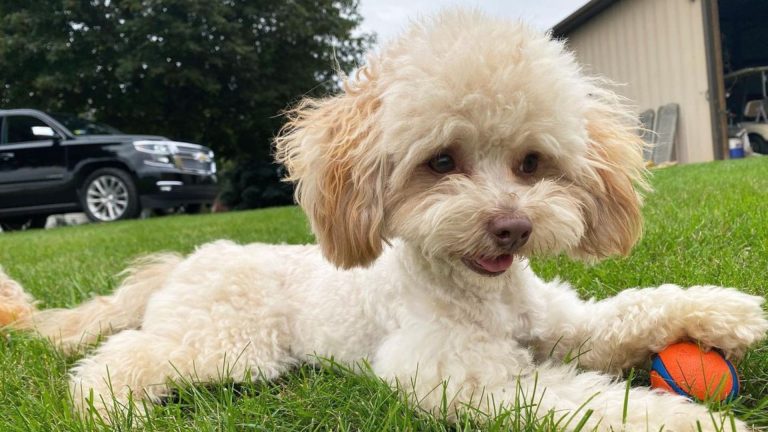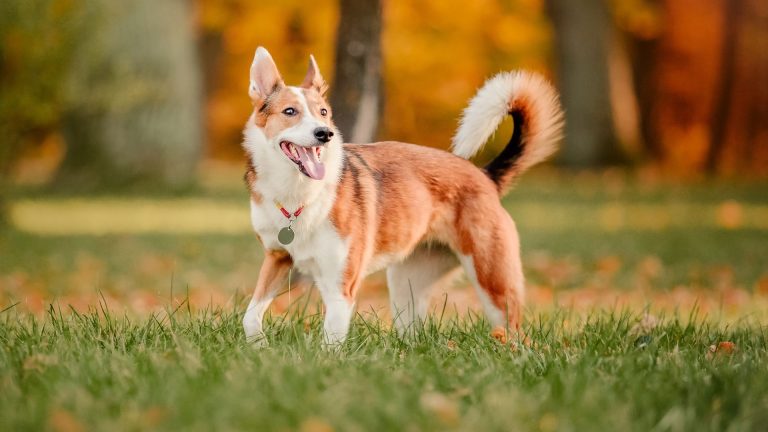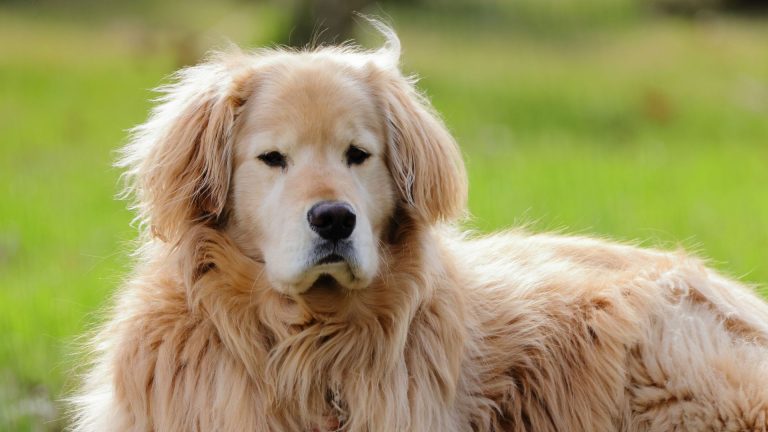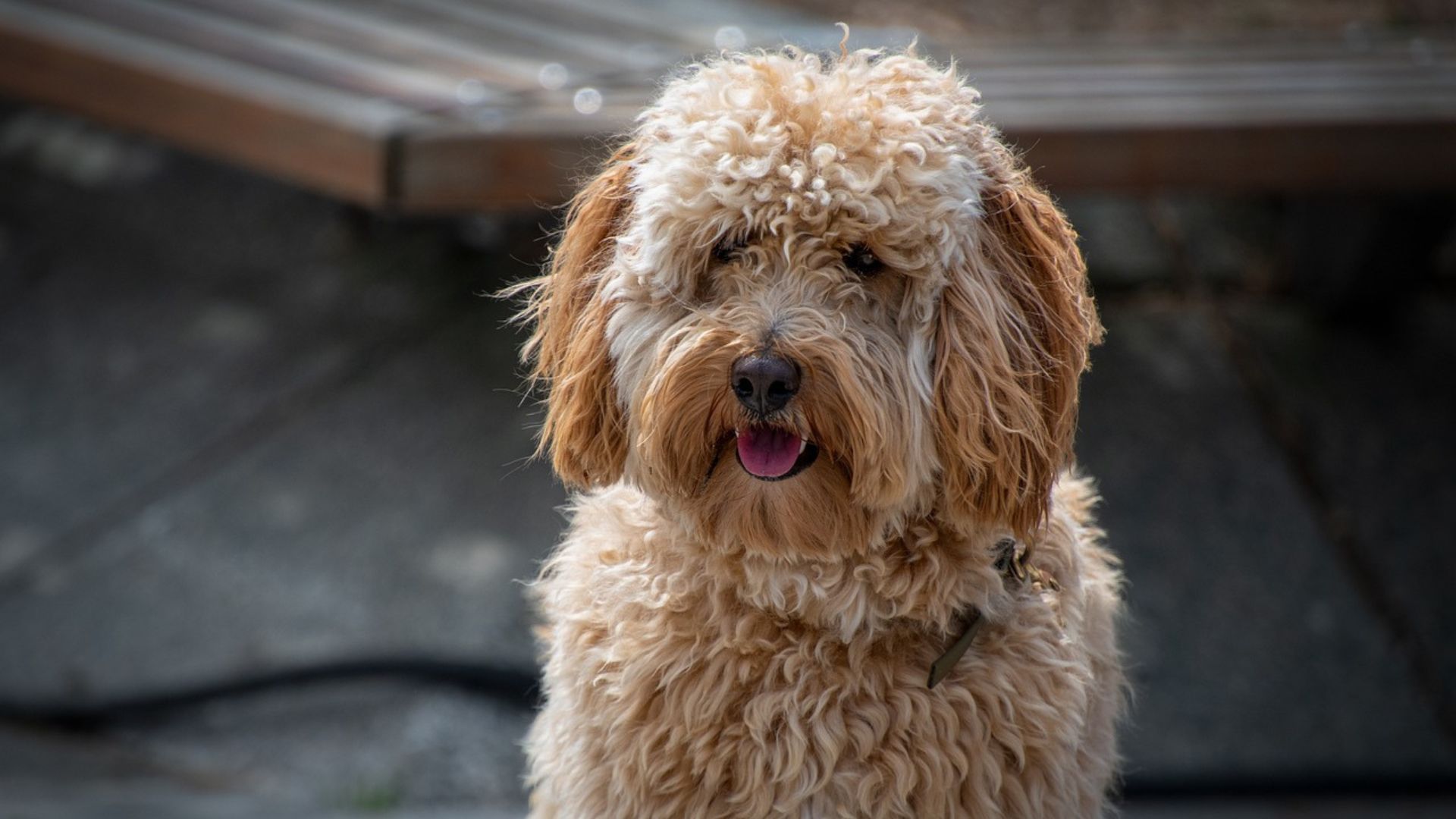
Contents
The Miniature Labradoodle is a crossbreed between a Miniature Poodle and a Labrador Retriever. Known for their friendly nature and intelligence, these dogs have quickly become popular as family pets and companions. Their small size makes them suitable for various living environments, including apartments and houses. Understanding the Miniature Labradoodle’s traits, care requirements, and training needs is crucial for potential owners. These dogs are not only adorable but also have specific needs that must be met to ensure they thrive.
Proper care and training can lead to a well-behaved, happy pet. This guide will provide comprehensive insights into the Miniature Labradoodle, covering everything from their physical traits to effective training methods. By the end, you’ll be well-equipped to provide the best care for your Miniature Labradoodle, ensuring a fulfilling relationship for both of you.
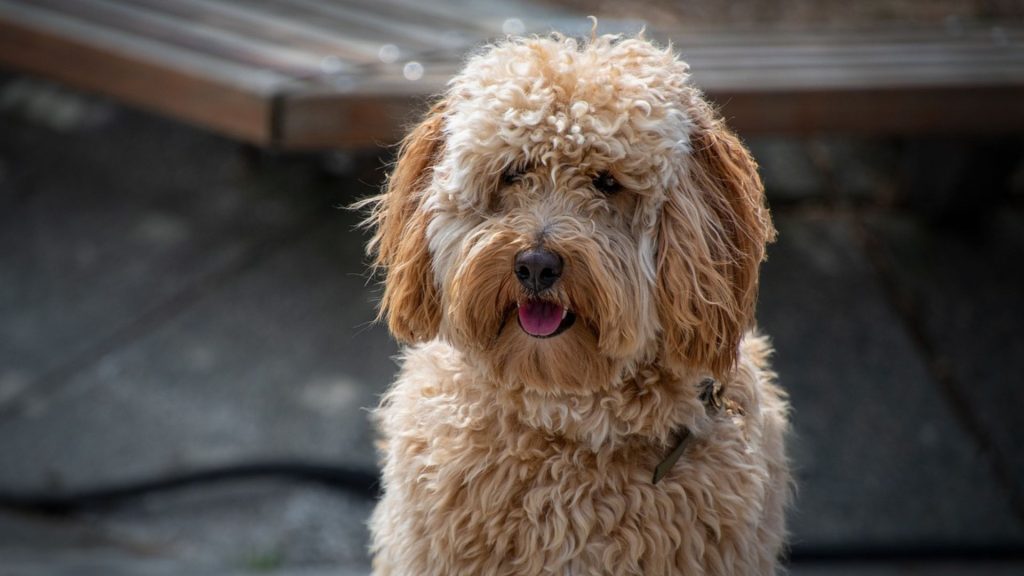
History and Origin
The Labradoodle breed originated in Australia in the late 1980s. Wally Conron, a breeder for the Royal Guide Dog Association of Australia, sought to create a hypoallergenic guide dog. By crossing a Labrador Retriever with a Standard Poodle, he hoped to combine the Labrador’s friendly, trainable nature with the Poodle’s low-shedding coat. The result was the Labradoodle, a dog that quickly gained popularity due to its friendly disposition and reduced shedding.
Development of the Miniature Version
The Miniature Labradoodle was developed by further refining the breed. Breeders began crossing Miniature Poodles with Labradors to create a smaller version of the original Labradoodle. This process involved selective breeding over several generations to ensure the dogs retained the desirable traits of both parent breeds. The goal was to produce a dog that was small enough for apartment living yet retained the intelligence, hypoallergenic coat, and friendly nature of its larger counterparts.
Purpose and Popularity of the Breed
Miniature Labradoodles were initially bred for their hypoallergenic qualities and suitability as guide dogs. However, their charming appearance and friendly, playful nature quickly made them popular as family pets. They are known for their intelligence, trainability, and affectionate behavior, making them excellent companions. Their small size and adaptable nature make them suitable for various living environments, contributing to their widespread popularity.
The Miniature Labradoodle continues to be a favorite among dog lovers, cherished for its blend of the best traits from both the Labrador Retriever and the Miniature Poodle. Understanding their history helps appreciate the careful breeding that has gone into developing this delightful breed.
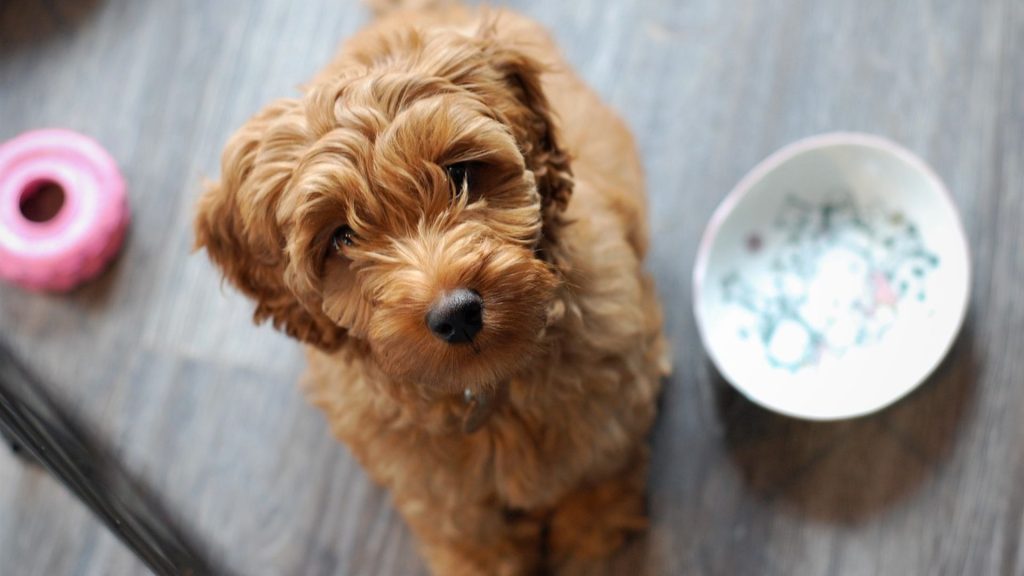
Physical Traits
Miniature Labradoodles are smaller than their standard counterparts. They typically stand 14 to 16 inches tall at the shoulder and weigh between 15 to 30 pounds. This compact size makes them ideal for apartment living or homes with limited space, while still being sturdy enough for various activities.
Coat Types and Colors
The coat of a Miniature Labradoodle can vary significantly, reflecting its Poodle heritage. There are three main types:
- Fleece: Soft, wavy, and slightly curly.
- Wool: Tighter curls, resembling a Poodle’s coat.
- Hair: Straighter and more like a Labrador’s coat, though less common.
Miniature Labradoodles come in a variety of colors, including cream, gold, chocolate, black, red, and apricot. Some may also have multi-colored or parti-color patterns, adding to their unique appearance.
Distinctive Physical Characteristics
One of the most distinctive traits of Miniature Labradoodles is their expressive eyes, often large and round, giving them an endearing appearance. They typically have a broad head with a medium-length muzzle, combining the features of both parent breeds. Their ears are set high and hang close to the head, often covered in soft, curly fur. The body is well-proportioned, muscular, yet agile, reflecting their active nature.
The tail is usually long and can be either straight or slightly curled, often carried high when the dog is excited or alert. Overall, the Miniature Labradoodle’s physical traits contribute to its charming and approachable appearance, making it a favorite among dog enthusiasts.

Temperament and Personality
Miniature Labradoodles are known for their friendly and sociable nature. They are highly intelligent and eager to please, making them easy to train. Their temperament is generally even-keeled, combining the best traits of both the Labrador Retriever and the Poodle. They are known for their playful and energetic behavior, yet they also have a calm and gentle side, making them versatile companions.
Personality Traits and Behavior
Miniature Labradoodles are affectionate and love to be around people. They thrive on human interaction and are known for their loyalty and devotion to their families. These dogs are typically good with children and get along well with other pets. Their playful nature makes them great playmates, while their intelligence and eagerness to learn make them quick to pick up new commands and tricks.
They are also known for their curiosity and enjoy exploring their surroundings. Despite their active nature, they are equally content to relax and cuddle with their owners. This balance of energy and calmness makes them adaptable to various lifestyles and living situations.
Suitability as Family Pets and Companions
Miniature Labradoodles are excellent family pets and companions. Their friendly and gentle disposition makes them great with children of all ages. They are patient and tolerant, which is essential in a family setting. Their moderate size and adaptable nature make them suitable for both apartments and houses with yards.
These dogs are also great companions for singles and seniors, providing both companionship and motivation for daily activities. Their sociable nature means they do not do well when left alone for long periods, so they thrive in households where they can get plenty of attention.
Overall, the Miniature Labradoodle’s loving and adaptable personality makes it a wonderful addition to any family or household, ensuring a joyful and enriching experience for all..

Health and Lifespan
Miniature Labradoodles are generally healthy dogs, but like all breeds, they can be prone to certain health issues. Common problems include hip dysplasia, a condition where the hip joint doesn’t fit properly, causing pain and mobility issues. They may also suffer from Progressive Retinal Atrophy (PRA), a genetic condition leading to blindness. Ear infections are another concern due to their floppy ears, which can trap moisture and bacteria. Additionally, Miniature Labradoodles may be susceptible to allergies, which can cause skin irritation and discomfort.
Lifespan Expectations
The average lifespan of a Miniature Labradoodle is between 12 to 15 years. With proper care, some may even live longer. This relatively long lifespan means they can be a long-term companion, bringing joy and affection to their families for many years.
Tips for Maintaining Their Health and Well-Being
To ensure your Miniature Labradoodle stays healthy, regular veterinary check-ups are crucial. Early detection of any health issues can significantly improve their prognosis. Vaccinations and preventative treatments for parasites should be kept up-to-date.
A balanced diet is essential for their overall health. High-quality dog food, appropriate for their age, size, and activity level, should be provided. Avoid overfeeding, as obesity can exacerbate health issues like hip dysplasia. Regular exercise is important to keep them fit and mentally stimulated. Daily walks, playtime, and interactive toys can help burn off their energy and keep them engaged.
Grooming is another vital aspect of their care. Regular brushing prevents matting and reduces the risk of skin infections. Check their ears weekly for signs of infection and clean them as needed. Dental hygiene is equally important; brushing their teeth regularly can prevent periodontal disease.
Social interaction and mental stimulation are also crucial. Miniature Labradoodles thrive on human interaction and can become anxious or bored if left alone for too long. Provide plenty of opportunities for socialization and training to keep their minds sharp.
By following these tips and providing consistent care, you can help ensure your Miniature Labradoodle lives a long, healthy, and happy life.
Care and Maintenance
Miniature Labradoodles have diverse coat types, ranging from wavy to curly, and each type requires specific grooming. Regular brushing, at least two to three times a week, is essential to prevent matting and tangling. For curly coats, daily brushing is recommended. Regular grooming sessions should include checking and cleaning their ears to prevent infections, especially given their floppy ears. Bathing should be done every few months or as needed, using a gentle dog shampoo to maintain coat health. Regular nail trimming and dental care, such as brushing their teeth or providing dental chews, are also crucial parts of their grooming routine.
Exercise Requirements
Miniature Labradoodles are active and energetic dogs that need regular exercise to stay healthy and happy. Aim for at least 30 to 60 minutes of physical activity each day. This can include walks, playtime in the yard, or engaging games like fetch. Mental stimulation is equally important, so incorporate activities like puzzle toys, obedience training, and interactive play. Their playful nature makes them great candidates for dog sports such as agility or flyball, which provide both physical and mental exercise.
Dietary Recommendations
A balanced diet is vital for the health and well-being of Miniature Labradoodles. Feed them high-quality commercial dog food appropriate for their age, size, and activity level. The diet should include a good balance of protein, fats, and carbohydrates, along with essential vitamins and minerals. Avoid overfeeding and monitor their weight to prevent obesity. Treats can be given in moderation and should be healthy options. Fresh water should always be available.
Consult with your veterinarian to determine the best dietary plan for your Miniature Labradoodle, considering any specific health concerns or dietary needs they may have. Proper nutrition ensures they remain active and healthy throughout their life.
By following these care and maintenance guidelines, you can help your Miniature Labradoodle thrive and enjoy a healthy, happy life.
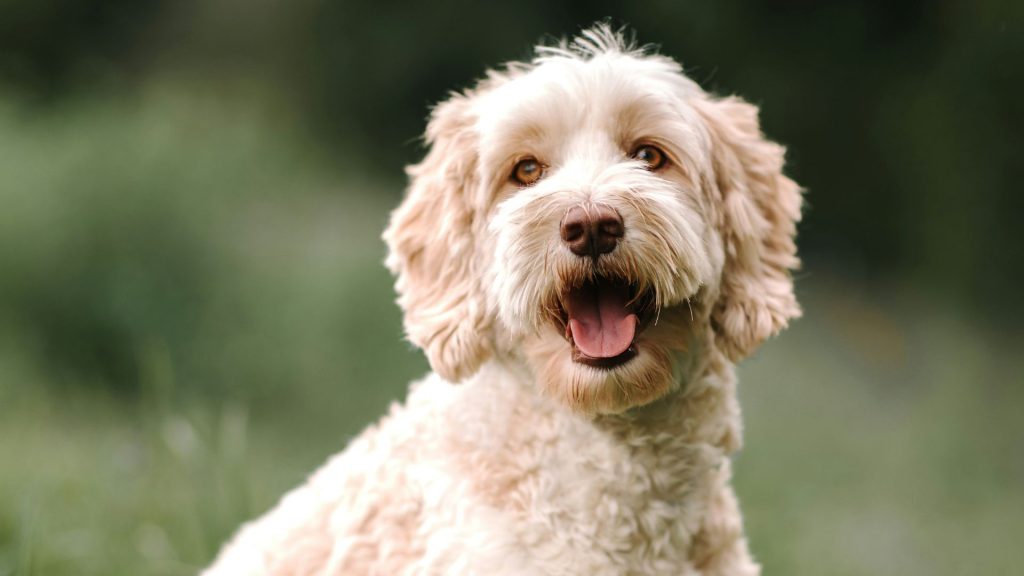
Training Tips
Training a Miniature Labradoodle can be a rewarding experience due to their high intelligence and eagerness to please. Positive reinforcement is the most effective training method. Use treats, praise, and toys to reward desired behaviors. Keep training sessions short and engaging, around 10-15 minutes, to maintain their interest. Consistency is key—ensure all family members use the same commands and reward system. Clicker training can also be beneficial, providing a clear signal to the dog when they perform the correct behavior. Start training early to establish good habits and reinforce them throughout their life.
Socialization Techniques
Socialization is crucial for Miniature Labradoodles to develop into well-rounded adults. Begin exposing them to various environments, people, and other animals at a young age. Puppy classes are a great way to start socialization in a controlled environment. Regularly take them to different places, such as parks, pet-friendly stores, and neighborhood walks. Encourage positive interactions with different people and pets to build their confidence and reduce fearfulness. Introducing them to a variety of sounds and experiences early on helps prevent anxiety and ensures they remain calm in different situations.
Addressing Common Behavioral Issues
Miniature Labradoodles, like all dogs, can develop behavioral issues if not properly addressed. Common problems include excessive barking, chewing, and separation anxiety. To manage barking, identify the cause and use the “quiet” command, rewarding silence. For chewing, provide plenty of appropriate chew toys and keep personal items out of reach. Crate training can help with separation anxiety by giving them a safe space when alone. Gradually increase the time they spend in the crate to help them adjust.
If behavioral issues persist, consider seeking advice from a professional dog trainer or behaviorist. Early intervention and consistent training are essential to address and correct unwanted behaviors.
By employing effective training methods, proper socialization techniques, and addressing behavioral issues promptly, you can ensure your Miniature Labradoodle becomes a well-behaved and happy member of your family.
Living with a Miniature Labradoodle
Miniature Labradoodles are adaptable dogs that can thrive in various living environments. Whether you live in an apartment or a house with a yard, these dogs can adjust well as long as they receive adequate exercise and mental stimulation. Their moderate size makes them suitable for smaller spaces, but they still need regular outdoor activities to burn off their energy.
Interaction with Children and Other Pets
Miniature Labradoodles are known for their friendly and gentle nature, making them excellent companions for children. They are playful and patient, often forming strong bonds with young family members. Supervision is essential to ensure that interactions are safe and positive for both the dog and the children.
These dogs also generally get along well with other pets. Their sociable nature means they enjoy the company of other dogs and can coexist peacefully with cats, especially if they are introduced properly and early on. Socialization from a young age helps reinforce positive behaviors around other animals.
Travel and Activity Considerations
Miniature Labradoodles are good travel companions due to their manageable size and adaptable nature. They enjoy exploring new places and can adjust well to car rides and trips. Ensure they are safely secured in a carrier or with a harness during travel. Bring along familiar items, like their favorite toys or blankets, to help them feel comfortable in new environments.
Activity-wise, Miniature Labradoodles are energetic and require regular exercise. Daily walks, playtime, and interactive toys keep them physically and mentally stimulated. They also enjoy dog sports and activities such as agility or fetch, which can provide both exercise and entertainment.
Living with a Miniature Labradoodle is a joyful experience. Their adaptable, friendly, and energetic nature makes them wonderful companions, fitting well into various lifestyles and family dynamics. By providing a stimulating environment and regular social interactions, you can ensure your Miniature Labradoodle remains happy and well-adjusted.
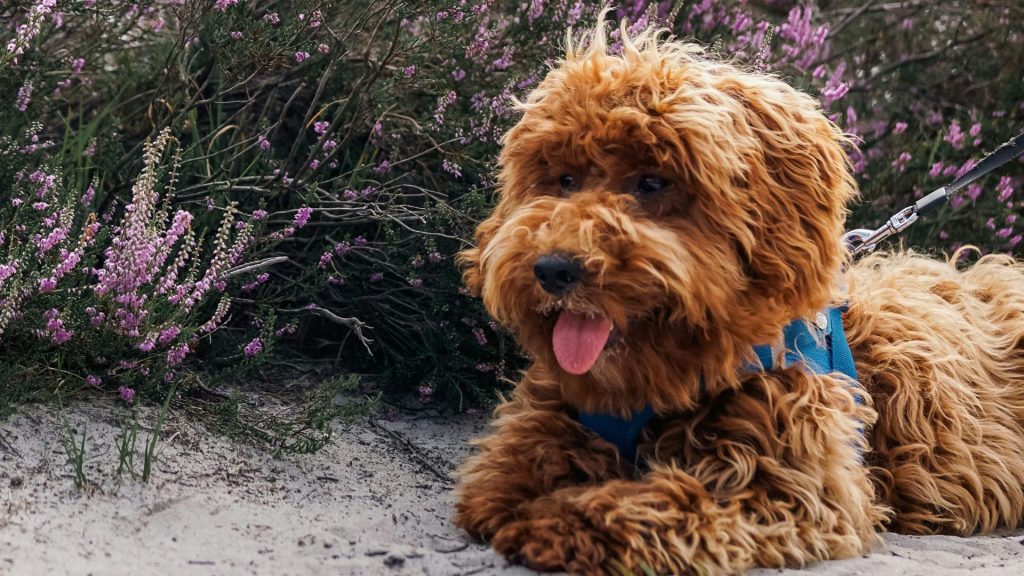
Adoption and Purchasing Tips
When looking for a Miniature Labradoodle, finding a reputable breeder is essential. Start by researching breeders who specialize in Labradoodles and have a good reputation. Look for breeders registered with recognized canine organizations like the American Kennel Club (AKC) or the Australian Labradoodle Association of America (ALAA). Visit the breeder’s facility to observe the living conditions and meet the puppies’ parents. A responsible breeder will provide health clearances for the puppies, proving they are free from common genetic disorders. They will also ask you questions to ensure their puppies go to suitable, loving homes.
Adoption Considerations
Adopting a Miniature Labradoodle from a rescue organization or shelter is a great option. Many breed-specific rescues have Labradoodles available for adoption. Check local shelters, rescue groups, and online adoption platforms. Adoption provides a dog with a second chance and can be a rewarding experience. When adopting, ask about the dog’s health history, temperament, and any special needs they may have. Spend time with the dog before making a decision to ensure they are a good fit for your family and lifestyle.
What to Look for in a Healthy Miniature Labradoodle
Whether buying from a breeder or adopting, it’s crucial to ensure the dog is healthy. Look for the following indicators:
- Appearance: The dog should have bright, clear eyes, a shiny coat, and clean ears. Their skin should be free from sores or excessive dryness.
- Behavior: A healthy Miniature Labradoodle will be alert, active, and playful. Avoid dogs that seem overly lethargic or exhibit signs of aggression or fear.
- Breathing: Ensure the dog breathes easily without wheezing, coughing, or excessive panting.
- Movement: Check for smooth movement without limping or stiffness, as joint issues can be common.
- Health Records: Verify that the dog has up-to-date vaccinations and health checks. A reputable breeder or rescue will provide this documentation willingly.
By following these tips, you can find a healthy and happy Miniature Labradoodle that will be a wonderful addition to your family.

Miniature Labradoodle in Different Environments
Miniature Labradoodles are highly adaptable dogs that can thrive in both urban and rural settings. In urban environments, their moderate size makes them suitable for apartment living. They require regular walks and visits to dog parks to ensure they get enough exercise. In rural settings, they enjoy having more space to roam and explore. However, they should still be monitored to prevent them from wandering off. Regardless of the setting, providing a stimulating environment with plenty of physical and mental activities is crucial for their well-being.
Adjusting to Various Climates
Miniature Labradoodles are quite adaptable to different climates, but certain precautions are necessary. In colder climates, their curly or wavy coats provide some insulation, but they may still need extra protection during extreme cold. Consider using dog sweaters or jackets and limiting outdoor time in severe weather. In hotter climates, it’s important to keep them cool and hydrated. Avoid excessive exercise during peak heat and provide plenty of water. Make sure they have access to shaded areas or air-conditioned spaces to prevent overheating. Regular grooming helps maintain their coat’s condition, which can also help with temperature regulation.
Indoor vs. Outdoor Living
Miniature Labradoodles are best suited to indoor living due to their need for human interaction and moderate size. They enjoy being part of the family and thrive on companionship. While they benefit from regular outdoor activities, they should primarily live indoors where they can be close to their owners. An indoor environment also protects them from extreme weather conditions and potential outdoor hazards. If you have a yard, ensure it is securely fenced to provide a safe area for play and exercise. Indoor living with supervised outdoor activities strikes the best balance for their health and happiness.
Providing a safe and comfortable living environment, regardless of the setting, ensures your Miniature Labradoodle remains happy and healthy. Adaptability, regular exercise, and proper care are key to their overall well-being.
Conclusion
Owning a Miniature Labradoodle is a rewarding experience filled with joy and companionship. Their friendly, intelligent, and adaptable nature makes them excellent family pets and companions for various lifestyles. With proper grooming, exercise, and training, these dogs thrive in both urban and rural settings. Whether you adopt or purchase from a reputable breeder, ensuring a healthy start is key. By meeting their physical and emotional needs, you can enjoy many happy years with your Miniature Labradoodle, creating cherished memories and a strong bond.

Hello, I’m Donna Carter, the founder and writer behind PetFleck.com. My journey with dogs started years ago, and it’s been a passion that has only grown stronger over time. I’ve always been fascinated by the unique behaviors and characteristics of different dog breeds, and this curiosity has led me to dive deep into the world of canine studies.
My love for dogs is the driving force behind everything I do. I’ve dedicated countless hours to researching and understanding the nuances of dog care, training, and breed-specific traits. This dedication helps me create content that is not only informative but also genuinely helpful for fellow dog lovers and owners.
At PetFleck, I combine my extensive knowledge and hands-on experience with my passion for dogs to provide valuable insights and tips. Whether it’s exploring different breeds or offering practical advice on dog care, I aim to share knowledge that makes a real difference in the lives of dogs and their families.
I’m thrilled to share my love for dogs with you through my writing. I hope my articles inspire and inform, helping you to better understand and appreciate the incredible bond we share with our furry friends.
Thank you for visiting PetFleck.com, and I look forward to connecting with you through our shared love of dogs!

